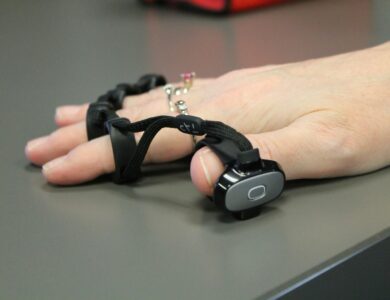
In recent decades, the integration of computing in healthcare has transformed the industry, leading to remarkable advancements in medical technologies. This synergy between technology and medicine has not only improved patient outcomes but also revolutionized the way healthcare services are delivered. From electronic health records to telemedicine and advanced diagnostic tools, computing plays a pivotal role in enhancing healthcare efficiency, accuracy, and accessibility. In this article, we will explore four major areas where computing has made significant contributions to healthcare.
1. Electronic Health Records (EHRs)
Electronic Health Records (EHRs) are one of the most significant advancements in modern healthcare. These digital records allow for the comprehensive documentation of a patient’s medical history, treatment plans, and ongoing care. Computing technologies have enabled the development and widespread adoption of EHR systems, which offer numerous benefits over traditional paper records.
EHRs improve the quality of care by providing healthcare providers with instant access to patient information, facilitating better decision-making. For example, a doctor can quickly review a patient’s medical history, allergies, and previous treatments, ensuring that they receive the most appropriate care. This instant access to information is particularly crucial in emergency situations, where time is of the essence.
Moreover, computing enables the integration of various healthcare data sources, such as lab results, imaging studies, and prescriptions, into a single, unified system. This integration minimizes the risk of errors and ensures that all healthcare providers involved in a patient’s care have access to the same up-to-date information. Additionally, EHRs facilitate seamless communication and collaboration among healthcare professionals, improving the coordination of care and reducing the likelihood of duplicate tests and procedures.
2. Telemedicine and Remote Patient Monitoring
Telemedicine has emerged as a game-changer in healthcare, especially in the wake of the COVID-19 pandemic. This technology allows patients to receive medical consultations and treatment remotely, using video conferencing, messaging, and other digital communication tools. Computing plays a crucial role in the development and implementation of telemedicine platforms, making healthcare more accessible to people in remote or underserved areas.
Telemedicine offers numerous benefits, including increased convenience for patients, reduced travel time, and lower healthcare costs. Patients can consult with their healthcare providers from the comfort of their homes, reducing the need for in-person visits. This is particularly beneficial for individuals with chronic conditions or mobility issues, who may find it challenging to travel to healthcare facilities.
Remote patient monitoring is another area where computing has had a significant impact. Through the use of wearable devices and mobile apps, patients can track their vital signs, such as heart rate, blood pressure, and glucose levels, and share this data with their healthcare providers in real time. This continuous monitoring allows for early detection of potential health issues and timely interventions, improving patient outcomes and reducing hospital readmissions.
3. Advanced Diagnostic and Imaging Technologies
The field of medical diagnostics has witnessed tremendous advancements thanks to computing technologies. Modern imaging techniques, such as magnetic resonance imaging (MRI), computed tomography (CT), and ultrasound, rely heavily on sophisticated software and hardware to produce high-resolution images of the human body. These images are crucial for diagnosing a wide range of medical conditions, from fractures to tumors.
Computing power is essential for processing and analyzing these complex images. Advanced algorithms can enhance image quality, detect anomalies, and provide detailed insights into a patient’s condition. For instance, machine learning algorithms can be trained to identify patterns in medical images, helping radiologists detect diseases like cancer at an early stage. This not only improves diagnostic accuracy but also reduces the workload on healthcare professionals.
In addition to imaging, computing has revolutionized laboratory diagnostics. Automated systems and artificial intelligence (AI) can analyze vast amounts of data from blood tests, genetic screenings, and other diagnostic procedures, providing faster and more accurate results. This automation reduces the risk of human error and ensures that patients receive timely and precise diagnoses.
4. Personalized Medicine and Genomics
The advent of computing has opened up new possibilities in the field of personalized medicine and genomics. Personalized medicine aims to tailor medical treatments to the individual characteristics of each patient, taking into account their genetic makeup, lifestyle, and environmental factors. Computing technologies are at the forefront of this revolution, enabling the analysis of large-scale genomic data and the development of targeted therapies.
Genomic sequencing, which involves decoding an individual’s DNA, generates massive amounts of data that require powerful computing resources for analysis. High-performance computing and cloud-based platforms allow researchers and clinicians to process this data efficiently, identifying genetic variations associated with specific diseases. This information can then be used to develop personalized treatment plans that are more effective and have fewer side effects compared to traditional one-size-fits-all approaches.
Moreover, computing facilitates the integration of genetic data with other health information, such as EHRs and lifestyle data, creating a comprehensive picture of a patient’s health. This holistic approach enables healthcare providers to make more informed decisions and deliver more precise and personalized care. For example, in oncology, personalized medicine can identify the most effective chemotherapy drugs for a particular patient based on their genetic profile, increasing the likelihood of successful treatment outcomes.
Conclusion
The role of computing in advancing healthcare technologies cannot be overstated. From the digitization of health records to the development of telemedicine, advanced diagnostics, and personalized medicine, computing has transformed the healthcare landscape. These technological advancements have improved the quality, efficiency, and accessibility of healthcare services, ultimately leading to better patient outcomes.
As computing technologies continue to evolve, we can expect even more groundbreaking innovations in healthcare. Artificial intelligence, machine learning, and big data analytics will further enhance our ability to diagnose and treat diseases, predict health risks, and personalize medical care. The integration of computing and healthcare will continue to push the boundaries of what is possible, ushering in a new era of medicine that is more precise, proactive, and patient-centered.




